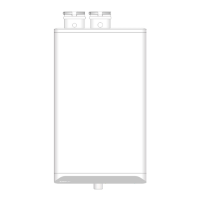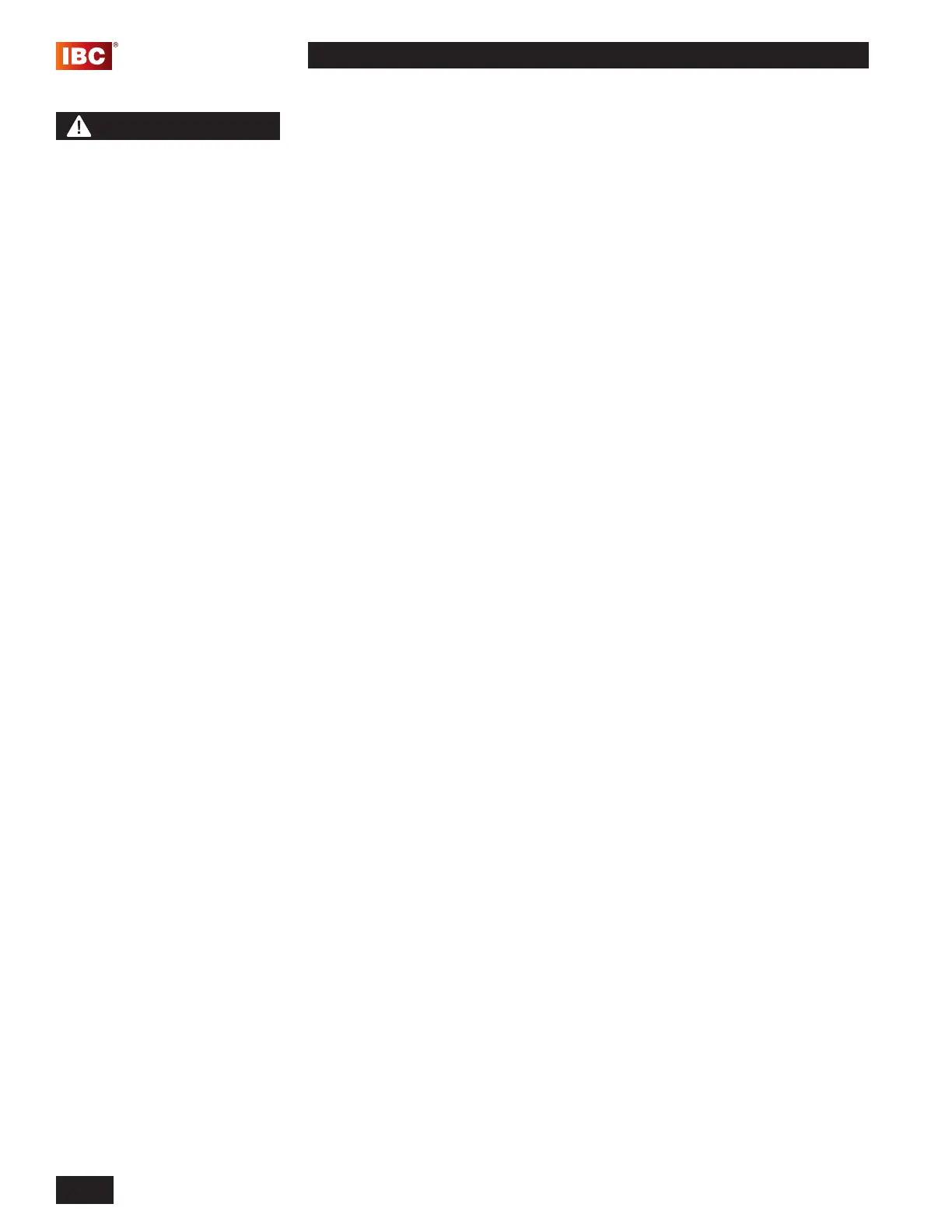INSTALLATION AND OPERATION INSTRUCTIONS
1-24
SFC BOILER / WATER HEATERS - SFC 199
Schematics for several piping layouts are provided herein, and additional
application drawings showing basic design options are available at www.
ibcboiler.com. You must conform the piping design to one of the provided
congurations to simplify the control application, promote good loads and ow
management.
The SFC series modulating units offer exceptional matching of heat generation to
radiation. The low minimum ring is better suited to low thermal loads presented
in a typical multi-zoned radiation system. However, where individual zones in
a heating system have loads under 10,000 Btu/hr, the system will still benet
through use of a buffer tank to ensure a controlled supply temperature, and to
prevent short-cycling. Buffering should be added on the secondary piping of the
relevant load, to avoid bulking up the thermal mass of the primary piping circuit
(and potentially lengthen the duration of the transition from hot to cool loads).
Propylene glycol solution is commonly used in a closed loop where freeze
protection is required. Its density is lower than that of water, resulting in lower
thermal performance at a given ow and pressure. A solution of propylene glycol
to water will require an increased system circulation rate and system head to
provide performance equivalent to straight water.
1.6.2 Basic Heating Piping Arrangements
Primary/Secondary Piping - Benets and installation rules
The primary/secondary conguration:
• Ensures good circulating water ow through the unit irrespective of load or
radiation system head.
• Allows exible ΔT° control in secondary loops.
• Adds to the system’s thermal buffering, to assist in handling small loads and
temperature transition.
A primary/secondary piping conguration requires an extra pump, independent of
any secondary load pumps. The SFC series modulating unit includes a pre-wired
integral Primary Pump.
For optimal performance, place pumps on the supply side of secondary loops
to facilitate air evacuation. Use pumps with internal check valves to avoid ghost
ows and thermal siphoning.
The SFC series units are designed to be piped in a primary/secondary piping
arrangement. In some cases the unit can be piped in series with the heating load
if the pump is capable of providing the ow and head the system requires. For
example, an SFC unit and an air handler can be installed together without the
use of an additional pump if the air handler is installed within close proximity of
the unit and with properly sized supply and return piping (see Figure 29).
If the installation involves small loads, as in typical zoned baseboard heating
applications, we recommend using a buffer tank.
To aid in temperature transition from hot to cool loads, place a 3-way mixing
valve at the entrance to the cool load (this will also provide oor protection). This
type of installation allows immediate circulation of mixed ow into the cool loop.
WARNING
Water quality has a signicant
impact on the lifetime and
performance of an IBC unit’s
heat exchanger.
Improperly prepared water in
a heating circuit may cause
damage to the heat exchanger
through corrosion or fouling.
Repeated or uncontrolled
water lls will increase the
potential for damage.
High levels of dissolved
solids or minerals may
precipitate out of the uid
onto the hottest part of the
heat exchanger, impairing
heat transfer and resulting in
overheating and premature
failure. The amount of solids
that may form on the heat
exchanger will depend on
the degree of hardness and
the total water volume in
the system. A high water
volume system with a low
hardness count may cause
as much damage as a system
with less volume and higher
hardness. We recommend
treating water to remove all
dissolved solids. Other water
chemistry allowable limits are
as follows:
• Acidity pH is to be between
6.5 and 8.5
• Chloride is to be less than
125 mg/l
• Iron is to be less than 0.3
mg/l
• Cu less than 0.1 mg/l
• Conductivity is to be less
than 400μS/cm (at 25°C)
• Hardness is to be 7 Grains
or less
IMPORTANT: Ensure that
these limits are acceptable
for the other water-side
components in the system.

